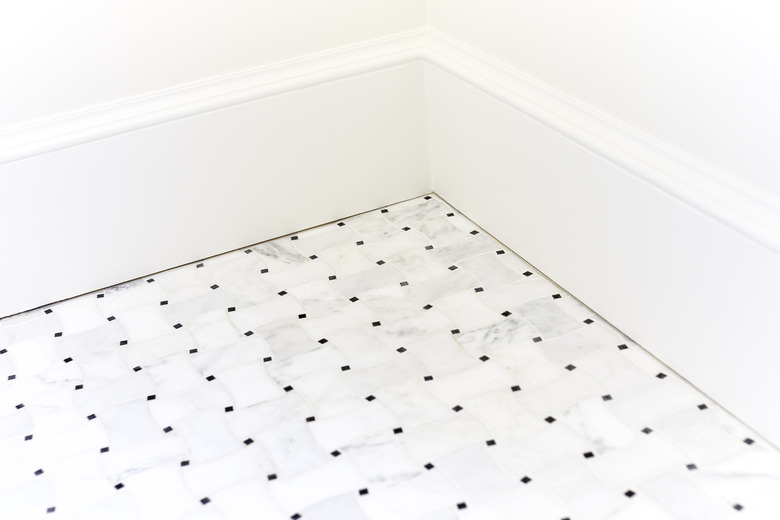The Best Way To Remove Ceramic Tile Baseboard
While most baseboards are made of plaster or wood, there are several reasons why you may have a tile baseboard, particularly in a bathroom, laundry room or kitchen. Tile is an excellent material for baseboard construction in rooms that see a lot of moisture. It's durable, washable and stands up to humid and wet conditions without warping. Tile that has been installed as a baseboard is generally intended to be there for a long time; however, decorating tastes or damage may create a scenario where you need to remove the ceramic tile baseboard.
Why Remove Tile Baseboard?
Why Remove Tile Baseboard?
Removing tile baseboard can be complicated, but if you have the right materials, it's a project that you can make short work of as long as you meticulously prepare yourself for the project. Like many home improvement projects, removing tile baseboard isn't particularly challenging or dangerous, it simply requires patience, diligence and some tolerance for tedious work.
Sometimes, you may be removing the tile baseboard because you're dealing with loose tiles and need to replace or repair them. Loose tile repair is significantly easier and cheaper than ripping out all of the tiles on your baseboard and installing it again. You need only to replace and regrout the loose tile.
In other scenarios, you may be removing tile baseboard because you want to replace the tile with a new style or color. Or, maybe you're removing the tile baseboard along with the drywall it's attached to because you're hoping to add new drywall and perhaps a wood baseboard or no baseboard at all. In either case, you'll need some tools and materials to complete the job.
Loose Tile Repair
Loose Tile Repair
When it comes to loose tile repair, you want to solve the problem as soon as you can. Loose tiles happen when the grout or viscous materials bonding the tile to the drywall behind it lose its grip. This can cause grout to chip and gaps to appear between tiles. It can also cause tiles to drop off and shatter, which you'll want to avoid.
Ideally, you'll have some leftover tiles from when your tiles were installed that you can use to replace any loose and damaged tiles. If they're not damaged, you'll only need to reattach them to the baseboard. You don't necessarily need an electric tile removal tool as you can most likely use a sharp utility knife or grout removal tool to clear away any grout around the loose tile.
Removing Tile Baseboard
Removing Tile Baseboard
If you're planning to remove the entire baseboard, including the drywall portion behind it, you don't need to remove each tile individually. Using a utility knife, cut into the drywall just above the tile baseboard. Drag the knife across the baseboard, affectively "cutting" out the tile from the lower section of the wall. Then, use a crowbar or your hands (wear heavy-duty utility gloves) to pull the tile and drywall away from the wall studs.
If you don't want to take out the bottom portion of the wall, you can opt to remove the tiles individually. Using a small utility knife or a grout removal tool, remove the grout from between the ceramic tiles. Then, position the tip of the utility knife behind the tile and press it forward, prying the tile from the wall and removing it from the baseboard entirely.
